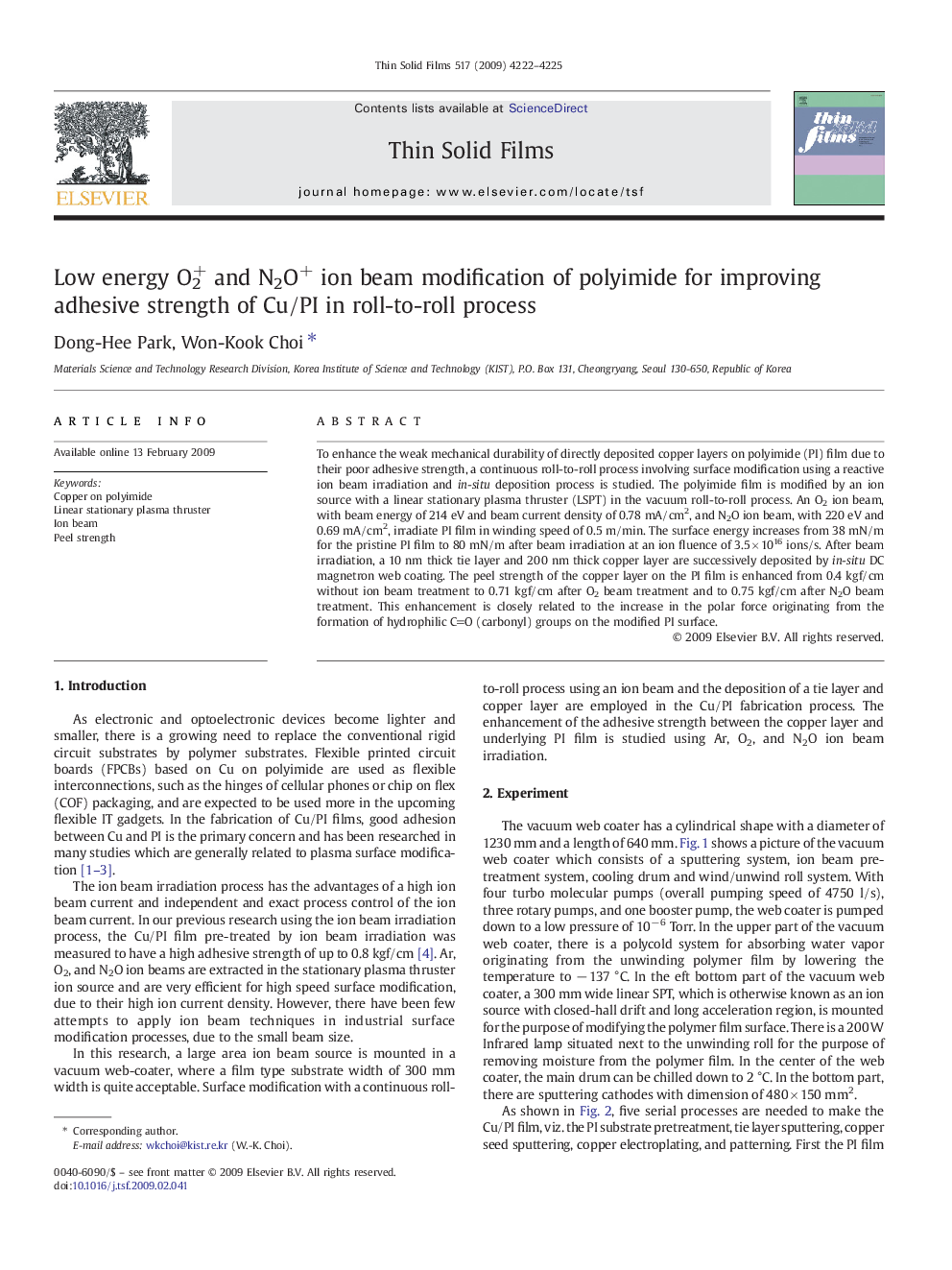| Article ID | Journal | Published Year | Pages | File Type |
|---|---|---|---|---|
| 1669635 | Thin Solid Films | 2009 | 4 Pages |
To enhance the weak mechanical durability of directly deposited copper layers on polyimide (PI) film due to their poor adhesive strength, a continuous roll-to-roll process involving surface modification using a reactive ion beam irradiation and in-situ deposition process is studied. The polyimide film is modified by an ion source with a linear stationary plasma thruster (LSPT) in the vacuum roll-to-roll process. An O2 ion beam, with beam energy of 214 eV and beam current density of 0.78 mA/cm2, and N2O ion beam, with 220 eV and 0.69 mA/cm2, irradiate PI film in winding speed of 0.5 m/min. The surface energy increases from 38 mN/m for the pristine PI film to 80 mN/m after beam irradiation at an ion fluence of 3.5 × 1016 ions/s. After beam irradiation, a 10 nm thick tie layer and 200 nm thick copper layer are successively deposited by in-situ DC magnetron web coating. The peel strength of the copper layer on the PI film is enhanced from 0.4 kgf/cm without ion beam treatment to 0.71 kgf/cm after O2 beam treatment and to 0.75 kgf/cm after N2O beam treatment. This enhancement is closely related to the increase in the polar force originating from the formation of hydrophilic CO (carbonyl) groups on the modified PI surface.
